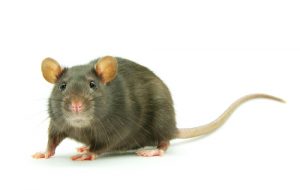Rodents Love “Clutter!”
By Chris Williams on February 21, 2012.
Whether you call it clutter, or junk, or just “stuff,” most of us have some of it in our homes. Some people have a lot of it. People don’t realize how much clutter contributes to pests, especially of the rodent variety. Piles of stuff provide hiding places, nest sites, and secret travel routes for mice and rats. Clutter makes it difficult to clean, which further encourages rodents. Clutter even sometimes provides food for rats and mice if it includes empty food containers or dirty dishes, or when food scraps drop into hidden spaces. This is compounded by the fact that areas with large amounts of clutter are rarely disturbed by people, providing a safe haven for rodents. Since cluttered areas are rarely checked, a rodent problem can grow unseen for weeks. And clutter makes it more difficult to inspect and treat for rodents.
 Homes: In homes, clutter is often found in attics, basements, and garages, the same sites that are often the focus of a mouse infestation. Firewood can be a problem, too, when it is stored inside directly on the floor or against walls where it provides hiding places for rodents. Getting rid of indoor clutter can actually help with rodent control in more than one way. Because mice will investigate any disturbance in their territory, new clutter-free areas can actually improve trapping results as mice check out the clean space. Clutter-free areas will be less attractive to new rodents looking to move in.
Homes: In homes, clutter is often found in attics, basements, and garages, the same sites that are often the focus of a mouse infestation. Firewood can be a problem, too, when it is stored inside directly on the floor or against walls where it provides hiding places for rodents. Getting rid of indoor clutter can actually help with rodent control in more than one way. Because mice will investigate any disturbance in their territory, new clutter-free areas can actually improve trapping results as mice check out the clean space. Clutter-free areas will be less attractive to new rodents looking to move in.
High-Rises: High-rises and commercial office buildings have their own special clutter problems. There is often accumulated trash in compactor rooms and hallway trash rooms. Residents may leave cardboard boxes and items too large for the trash chutes on the floor of the trash room. In addition, maintenance staff often use the compactor room as an overflow storage area for boxes and building materials and cleaning supplies. Nothing should be stored in the compactor room except trash-related equipment.
Apartments: Residents that are moving in or out of apartments often dump old mattresses, sofas, tables, etc. next to the dumpster. Since most apartment properties contract for pickup of large items only on an irregular basis, these items can provide hiding places for rats for several weeks before they are picked up…and they are located right next to a food source.
Offices: Cluttered offices that have stacks of boxes and papers (good nest sites and nest material) can be the source of mouse problems, especially if the workers in these offices also keep snack food in their desk drawers. Mouse nests can often be found in the back corners of desk drawers. Messy kitchenettes or break rooms can provide both nest sites and food for rodents.
Outside Perimeter: Outside clutter contributes to rodent problems, too. Stacks of bricks, wood, stones, other building materials, and debris provide hiding places and nest sites for rodents. If these materials are stacked close to the building foundation, rodents may find their way inside. Firewood should be stacked up off the ground and away from the foundation. Similarly, outside sheds that are filled with clutter can easily become home to rodents. Spilled bird seed under feeders, piles of bruised or rotting fruits and vegetables, accumulated pet feces, and garbage cans without lids all provide food for mice and rats.